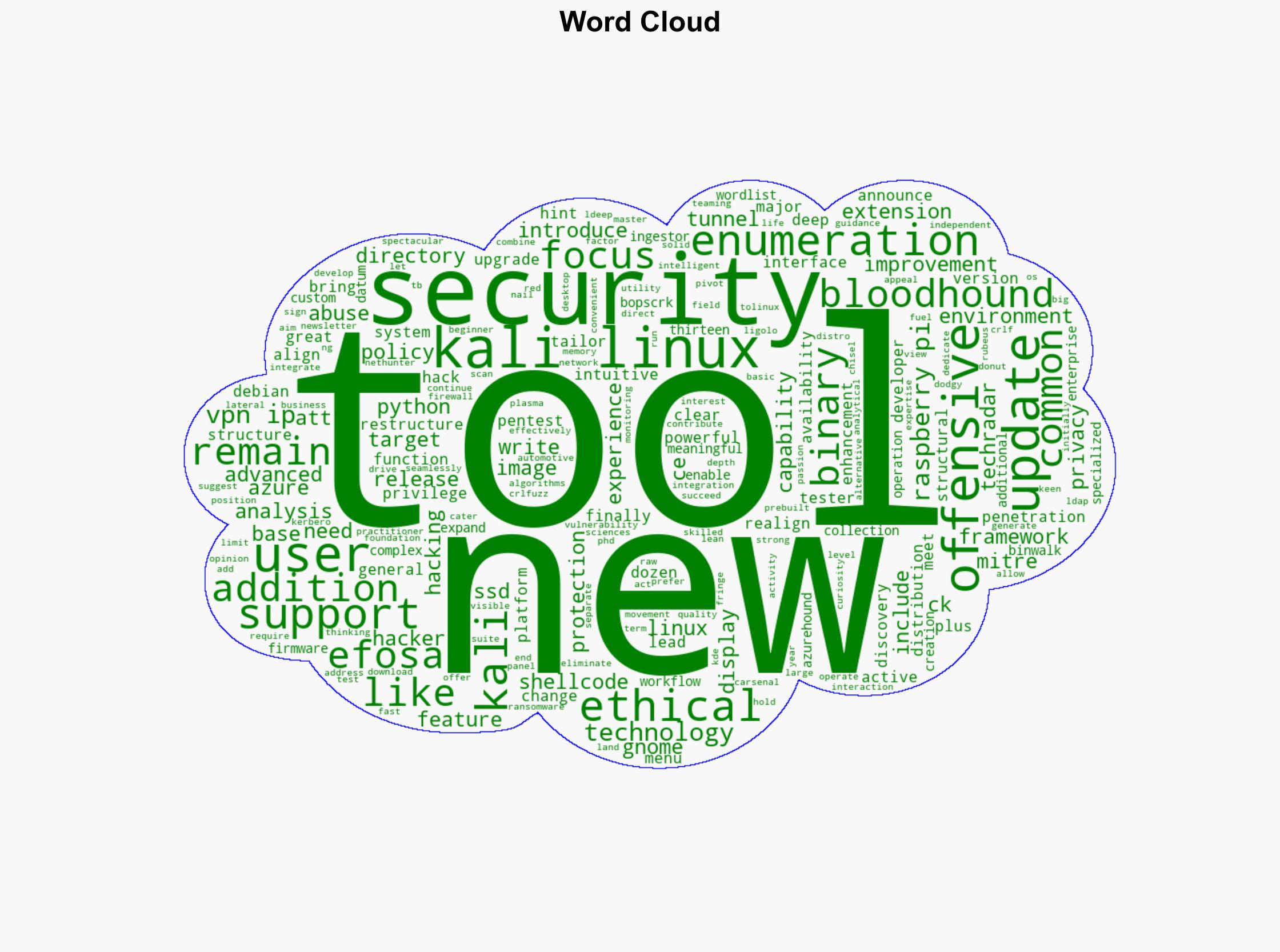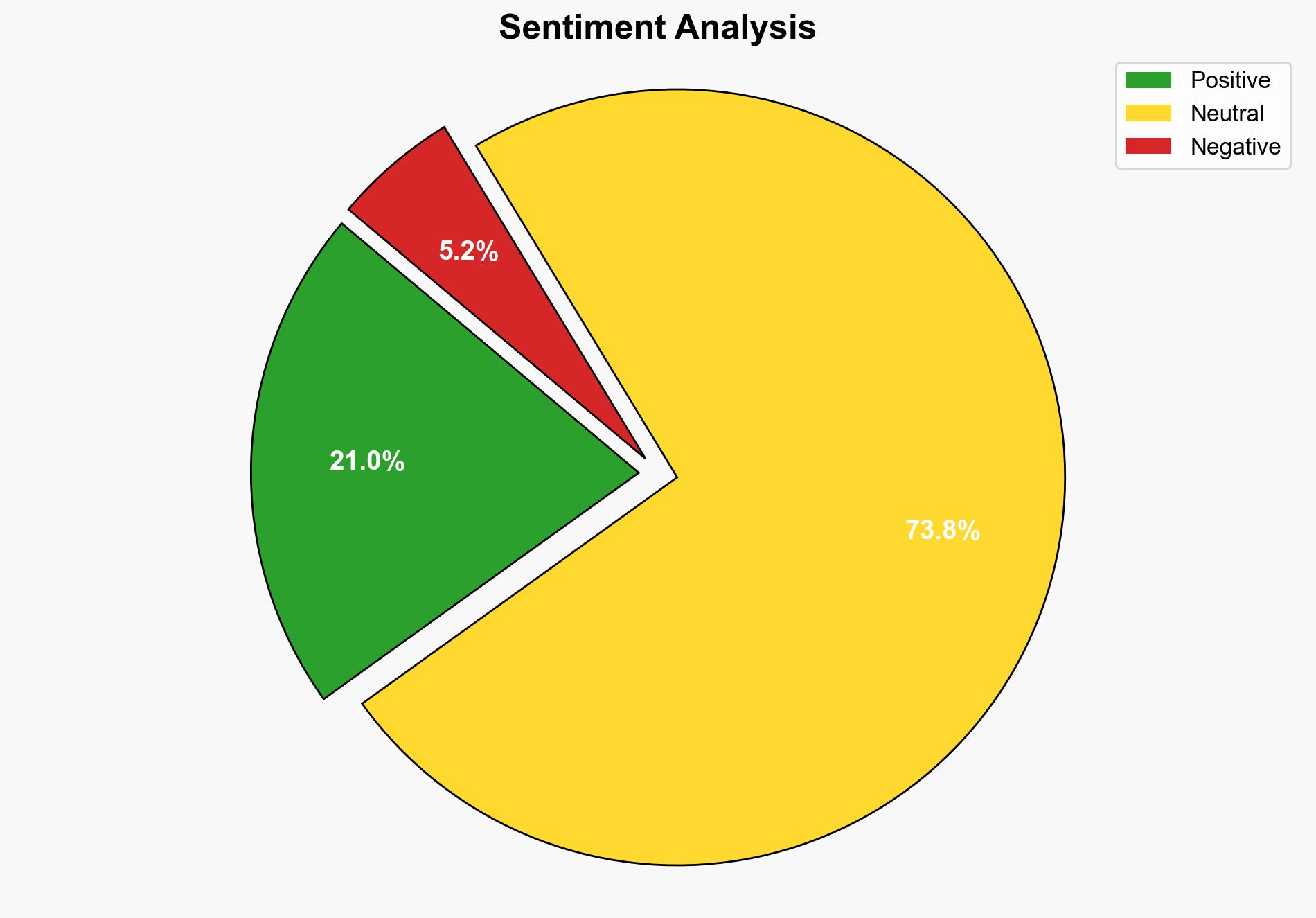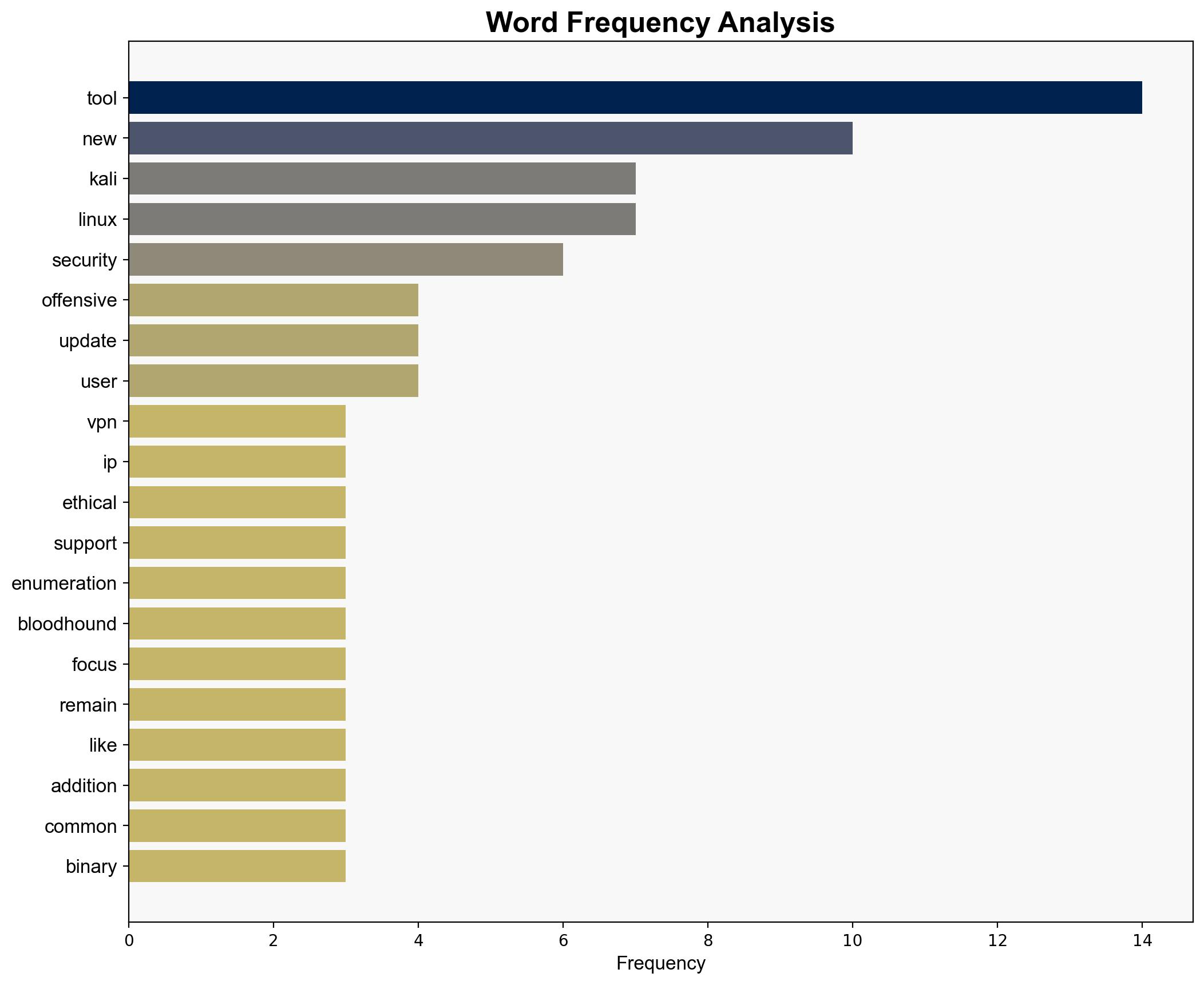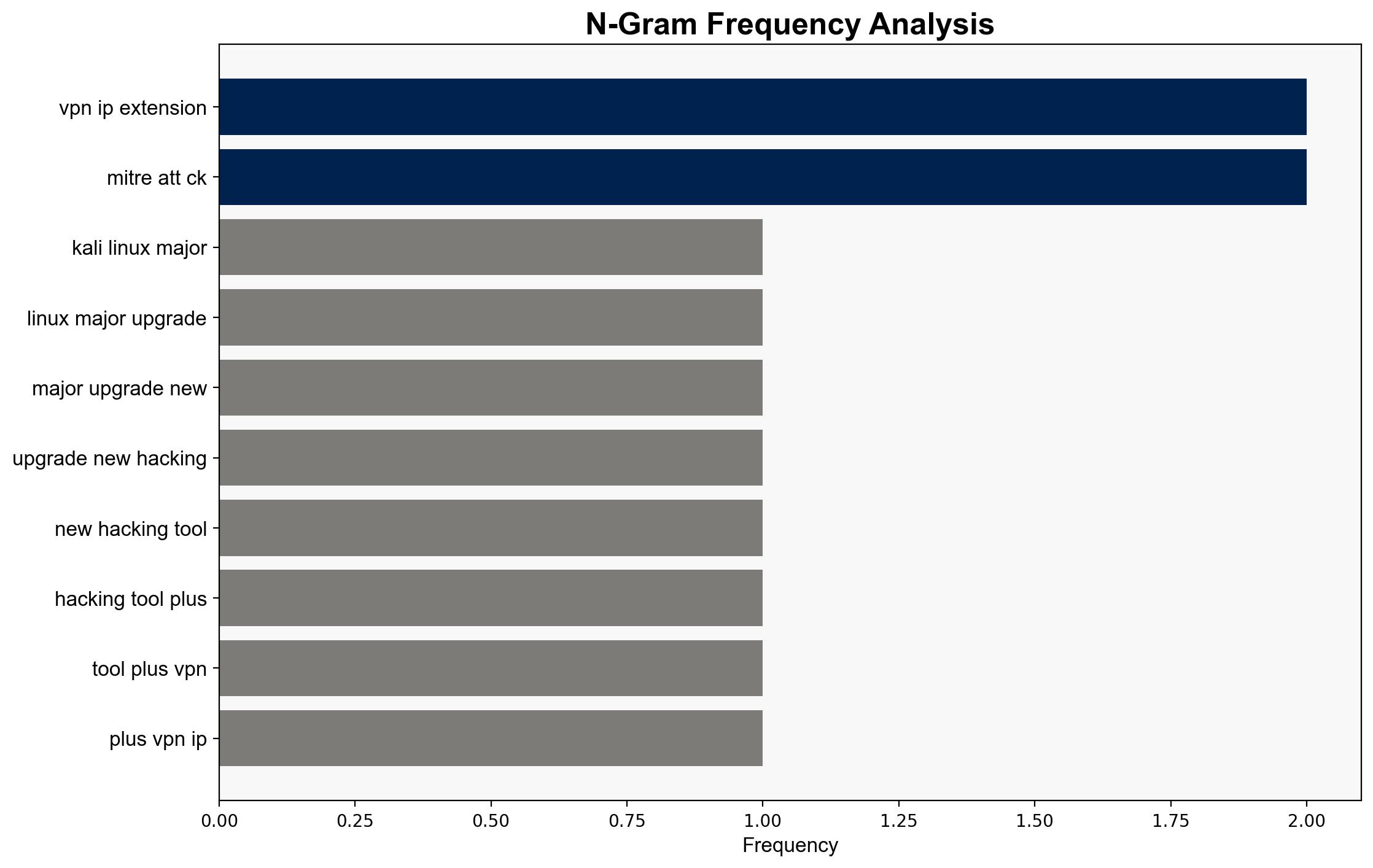Kali Linux gets a major upgrade with more than 10 new hacking tools plus VPN IP extension great for ethical hackers and pentest pros – TechRadar
Published on: 2025-06-22
Intelligence Report: Kali Linux gets a major upgrade with more than 10 new hacking tools plus VPN IP extension great for ethical hackers and pentest pros – TechRadar
1. BLUF (Bottom Line Up Front)
The latest upgrade to Kali Linux introduces over ten new hacking tools and a VPN IP extension, significantly enhancing capabilities for ethical hackers and penetration testing professionals. This update aligns with the MITRE ATT&CK framework, improving user experience and tool discovery. Key recommendations include leveraging these tools for advanced threat simulations and enhancing cybersecurity defenses.
2. Detailed Analysis
The following structured analytic techniques have been applied to ensure methodological consistency:
Adversarial Threat Simulation
The new tools in Kali Linux allow for more sophisticated modeling and simulation of cyber adversary actions, aiding in the anticipation of vulnerabilities and strengthening resilience strategies.
Indicators Development
The upgrade supports the detection and monitoring of behavioral or technical anomalies, facilitating early threat detection across systems.
Bayesian Scenario Modeling
Probabilistic inference can be applied to the new tools to quantify uncertainty and predict potential cyberattack pathways.
Network Influence Mapping
The integration of tools like AzureHound enhances the mapping of influence relationships, allowing for a better assessment of actor impact.
Narrative Pattern Analysis
With tools like BloodHound CE, the update aids in deconstructing ideological narratives for comprehensive threat assessment.
3. Implications and Strategic Risks
The upgrade to Kali Linux presents both opportunities and risks. While the enhanced tools improve capabilities for ethical hacking and penetration testing, they also pose a risk if misused by malicious actors. Organizations must be vigilant in monitoring emerging threats and systemic vulnerabilities, particularly in complex enterprise environments.
4. Recommendations and Outlook
- Organizations should integrate the new tools into their cybersecurity frameworks to enhance threat detection and response capabilities.
- Conduct regular training for cybersecurity personnel to effectively utilize the new features and tools.
- Scenario-based projections suggest that in the best case, these tools will significantly improve cybersecurity defenses; in the worst case, they could be exploited by adversaries, necessitating robust monitoring and control measures.
5. Key Individuals and Entities
Efosa Udinmwen
6. Thematic Tags
national security threats, cybersecurity, counter-terrorism, regional focus





